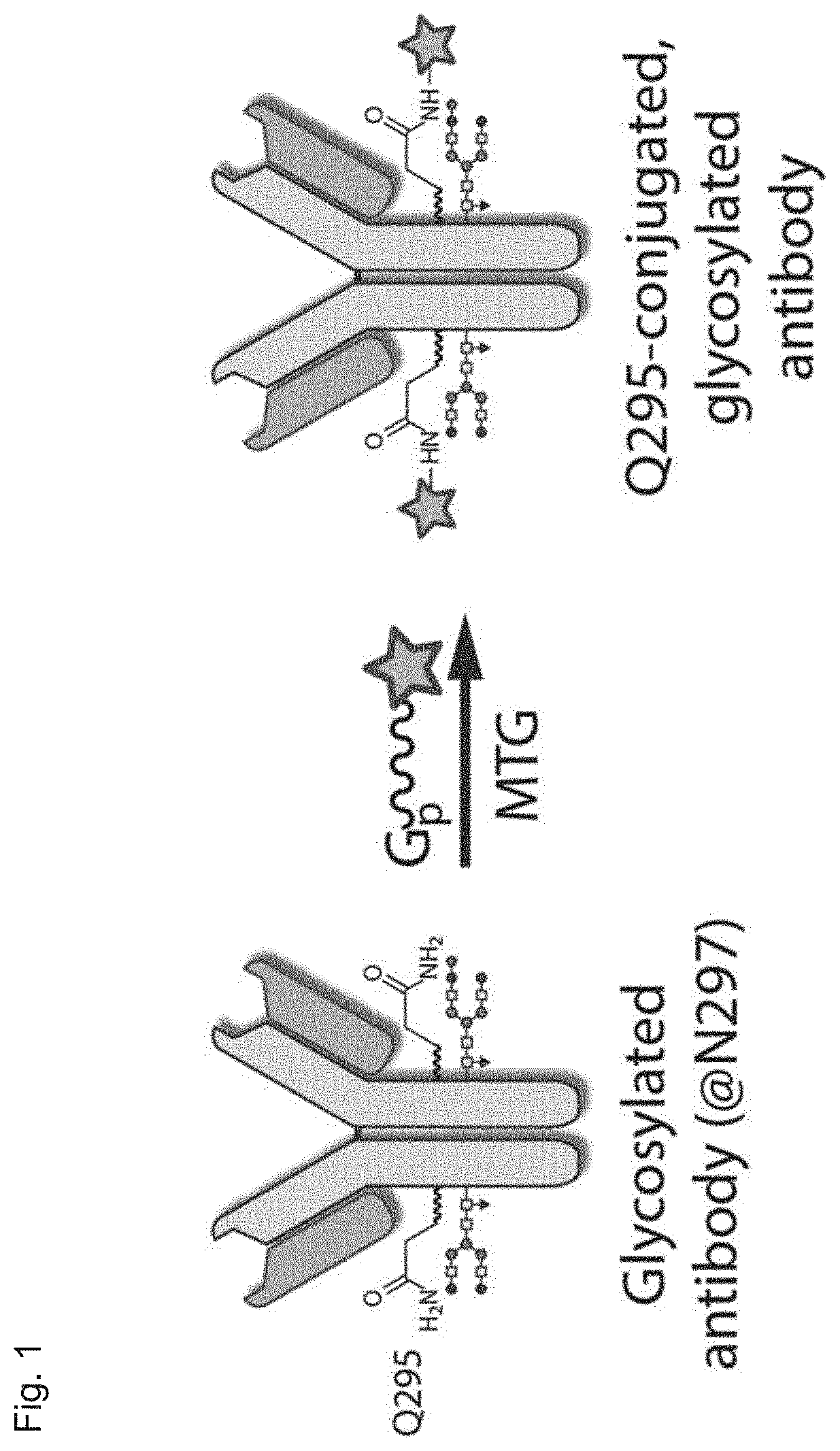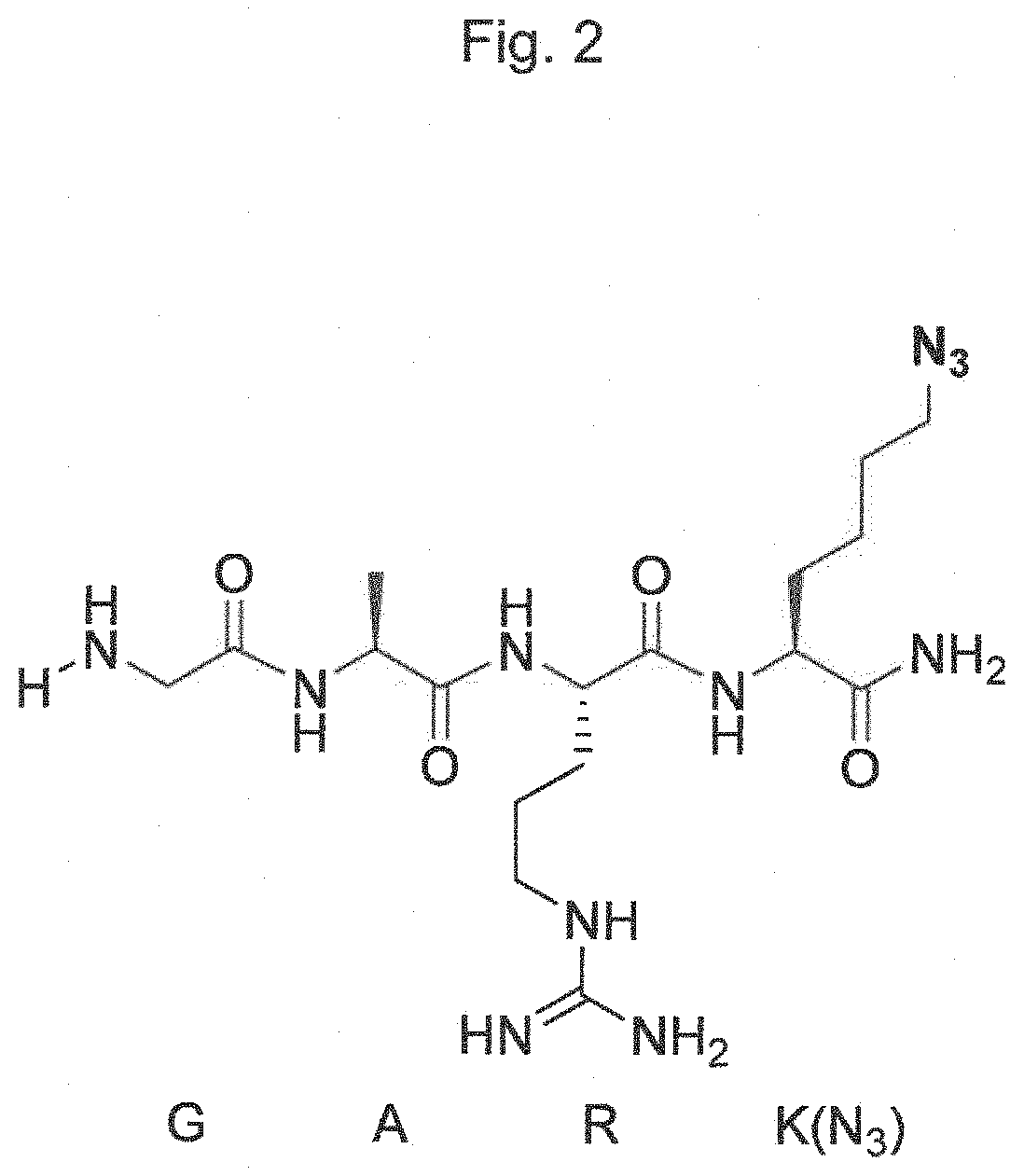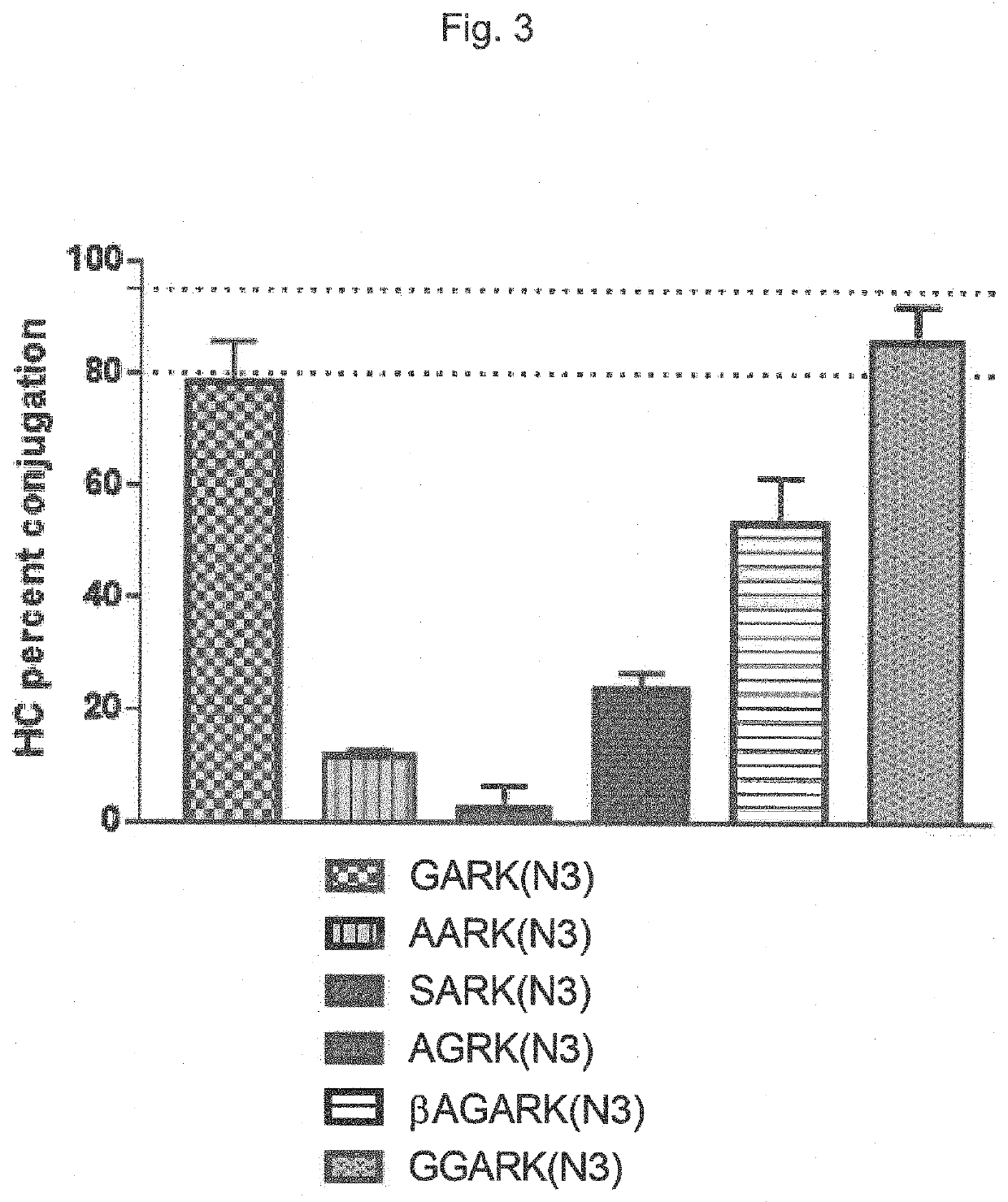Transglutaminase conjugation method with a glycine based linker
a technology of glycine and transglutaminase, which is applied in the field of transglutaminase conjugation method with glycine based linker, can solve the problems of increasing immunogenicity, combining two approaches with significant disadvantages, and combining with another amino acid with unwanted effects
- Summary
- Abstract
- Description
- Claims
- Application Information
AI Technical Summary
Benefits of technology
Problems solved by technology
Method used
Image
Examples
example 1
on Efficiency
[0486]Peptides were used as obtained and dissolved at a suitable stock concentration (e.g. 25 mM) following the manufacturers instruction, aliquots were prepared and stored at −20° C. Two antibodies of IgG-subclass (antibody 1: anti Her2 IgG1, antibody 2: anti CD38 IgG1) were modified as follows: 1 mg / mL of non-deglycosylated antibody (˜6.67 μM) was mixed with 80 molar equivalents of peptide linker (i.e. ˜533 μM), 6 U / mL MTG and buffer. The reaction mixture was incubated for 20 h at 37° C. and then subjected for LC-MS analysis under reducing conditions.
[0487]The following table 6 shows the conjugation efficiency of a linker according to the present invention (marked with a (*) vs other linkers:
TABLE 6Linker (one lettercode)pH 6pH 7.6pH 8.5GARK(N3)*077.334.2AARK(N3)010.78.1SARK(N3)05.23.6AGRK(N3)3.622.314.7
[0488]It is clearly visible that the peptide comprising a N-terminal Gly residue, with no further primary amine except the N-terminal primary amine, has by far the bes...
example 2
on Efficiency
[0489]Peptides were used as obtained and dissolved at a suitable stock concentration (e.g. 25 mM) following the manufacturers instruction, aliquots were prepared and stored at −20° C. Two antibodies of IgG-subclass (antibody 1: anti Her2 IgG1, antibody 2: anti CD38 IgG1) were modified as follows: 1 mg / mL of non-deglycosylated antibody (˜6.67 μM) was mixed with 80 molar equivalents of peptide linker (i.e. ˜533 μM), 6 U / mL MTG and buffer. The reaction mixture was incubated for 20 h at 37° C. and then subjected for LC-MS analysis under reducing conditions.
[0490]The following table 7 shows the conjugation efficiency of a linker according to the present invention (marked with a (*) vs another linker βAGARK(N3) is shown in FIG. 19 (note that βA designates β-Alanine).
TABLE 7Linker (OneBuffer 1Buffer 2Buffer 3Buffer 4Buffer 5letter code)(pH 6)(pH 7.6)(pH 8.5)(pH 7.6)(pH 7.6)βAGARK(N3)105706763GGARK(N3)*508408685
[0491]It is clearly visible that the peptide comprising a N-termina...
example 3
city Assay
[0492]Cell lines and culture: MDA-MB-231, and SK-BR-3 were obtained from the American Type Culture Collection (ATCC) and cultured in RPMI-1640 following standard cell-culture protocols.
[0493]SK-BR-3 is a breast cancer cell line isolated by the Memorial Sloan-Kettering Cancer Center in 1970 that is used in therapeutic research, especially in context of HER2 targeting. MDA-MB-231 cells are derived from human breast adenocarcinoma of the “basal” type, and are triple negative (ER, PR and HER2 negative). Adcetris (Brentuximab Vedotin) is a commercially available antibody drug conjugate that targets CD30 and is hence expected to not be active against cells which do not express CD30, e.g., MDA-MB-231, and SK-BR-3. Kadcyla (Trastuzumab emtansine) is a commercially available antibody drug conjugate that targets Her2 and is hence expected to be active against cells which express Her2 (e.g., SK-BR-3), and not active against cells which do not express Her2 (e.g., MDA-MB-231). p684 and...
PUM
| Property | Measurement | Unit |
|---|---|---|
| Structure | aaaaa | aaaaa |
| Electric charge | aaaaa | aaaaa |
| Immunostimulation | aaaaa | aaaaa |
Abstract
Description
Claims
Application Information
 Login to View More
Login to View More - R&D
- Intellectual Property
- Life Sciences
- Materials
- Tech Scout
- Unparalleled Data Quality
- Higher Quality Content
- 60% Fewer Hallucinations
Browse by: Latest US Patents, China's latest patents, Technical Efficacy Thesaurus, Application Domain, Technology Topic, Popular Technical Reports.
© 2025 PatSnap. All rights reserved.Legal|Privacy policy|Modern Slavery Act Transparency Statement|Sitemap|About US| Contact US: help@patsnap.com



